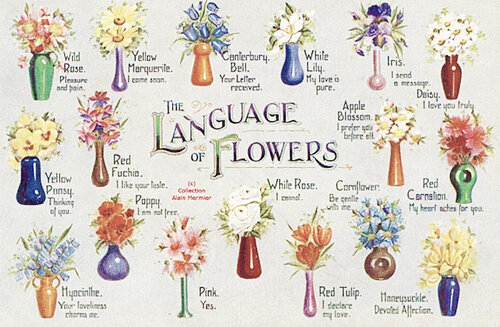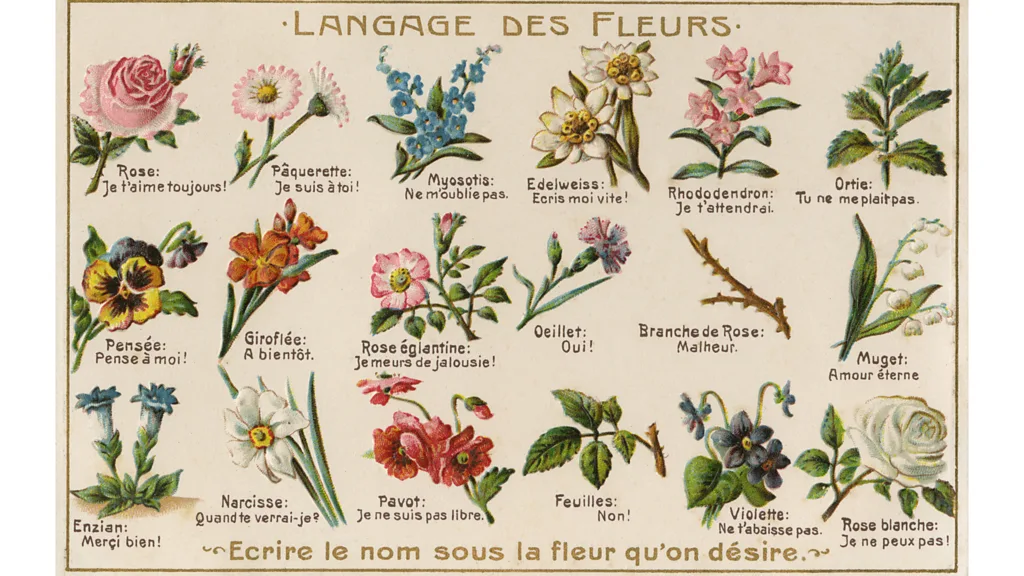Flowers are more than just pretty petals and pleasing scents—they’re secret storytellers. During the Victorian era, bouquets weren’t just gifts—they were coded messages, conveying everything from undying devotion to polite rejection. Welcome to the fascinating world of floriography, the language of flowers.
In an age when expressing strong emotions publicly was frowned upon, Victorians found a clever workaround: flowers. Each bloom held a specific meaning, and when arranged together, they whispered (or shouted!) sentiments that words couldn’t.
Let’s explore the secret messages behind some of the most intriguing blooms from that time, and how you can bring a touch of Victorian mystery into your modern arrangements.
What Is Floriography?
Floriography, from the Latin flos (flower) and graphia (writing), is the art of communicating through floral arrangements. Though it existed in various forms for centuries, it truly blossomed in Victorian England, thanks in part to a rise in garden culture, elaborate etiquette, and the popularity of gift-giving.
Books dedicated to decoding floral messages flew off the shelves—each with slightly different interpretations! This only added to the mystery and charm of crafting a bouquet that could say “I admire you from afar” or “Stay away” without a single spoken word.
More Than Roses: Lesser-Known Flower Meanings
While roses get all the romantic glory, the Victorian flower lexicon is far more nuanced. Here are some captivating choices you may not know about:
Acacia (Yellow) – Secret love
The bright yellow acacia, native to Australia, represented secret admiration and friendship that dared not speak its name. Tucked quietly into a bouquet, it could express affection too delicate to declare aloud.
Basil – Hate
Yes, you read that right! While we love basil in our pasta, Victorians saw it as a strong expression of disgust. Slipping a sprig of basil into an otherwise lovely bouquet? That’s some serious 19th-century sass.
Cyclamen – Goodbye
Delicate and nodding, cyclamen symbolised parting or resignation. If you’d been wronged or heartbroken, gifting someone a pot of cyclamen was a poetic way of saying, “We’re through.”
Mimosa – Sensitivity
Not just for bottomless brunches, mimosa represented bashfulness and sensitivity. It was often gifted between close friends, or by someone too shy to reveal their true feelings outright.
Marigold – Grief or jealousy
Despite its sunny appearance, the marigold bore a weightier message: sorrow or envy. It wasn’t necessarily a spiteful gift—but rather, a way to acknowledge complex, tangled emotions.
Crafting Your Own Victorian-Inspired Bouquet
Want to create your own modern floriography arrangement? Here are some thoughtful combinations and what they might mean:
For Secret Affection:
- Yellow Acacia (secret love)
- Gardenia (you are lovely)
- Camellia (longing for you)
For Reconciliation:
- White Violet (innocence or an apology)
- Hyacinth (forgiveness)
- Myrtle (peace and love)
For a Quiet Goodbye:
- Cyclamen (parting)
- Black Tulip (farewell)
- White Carnation (pure remembrance)
You can also add herbs like thyme (courage) or rosemary (remembrance) for an extra layer of meaning. Bonus: they smell amazing too!

How Victorians “Read” a Bouquet
Floriography wasn’t just about the types of flowers—it was also about how they were arranged and presented.
- Handed with the right hand: A positive message
- Handed with the left hand: A negative or opposite sentiment
- Flowers facing upward: Affirmation
- Flowers facing downward: Negation or sorrow
Even the ribbon placement mattered. A ribbon tied to the left side meant the message was about the giver. On the right? It referred to the recipient.
Victorians didn’t play when it came to floral communication.
Why Floriography Still Matters Today
In our fast-paced digital world, floriography offers something rare: slowness, intention, and mystery. There’s something beautifully old-fashioned about taking the time to craft a message in petals rather than pixels.
Whether you’re looking to rekindle romance, say sorry, or simply make someone smile with a thoughtful bouquet, incorporating the language of flowers brings deeper meaning to your gift.
Plus, it’s just fun! There’s a creative spark in secretly weaving messages through colour, scent, and symbolism—like writing poetry without words.
Tips for Sending a Secret Floral Message
- Do your homework: Different guides may give slightly different meanings. Pick one that resonates with you—and don’t be afraid to make it your own.
- Include a note (or don’t!): For mystery, let the flowers speak. Or include a tiny “key” to your bouquet if you want your message deciphered.
- Use herbs and greenery: Victorian floriography often included foliage to enhance meaning—ivy (fidelity), sage (wisdom), and laurel (victory) were favourites.
- Think seasonally: Work with what’s blooming near you or in season. It adds a local, natural charm.
Say It with Flowers—The Victorian Way
Flowers are timeless messengers, and floriography invites us to use them with more intention. At B&M Florist, we’re all about helping you express your feelings, stories, and moments—whether you’re falling in love, moving on, or just saying “I’m thinking of you.”
So next time you’re picking out blooms, why not send a secret message?



